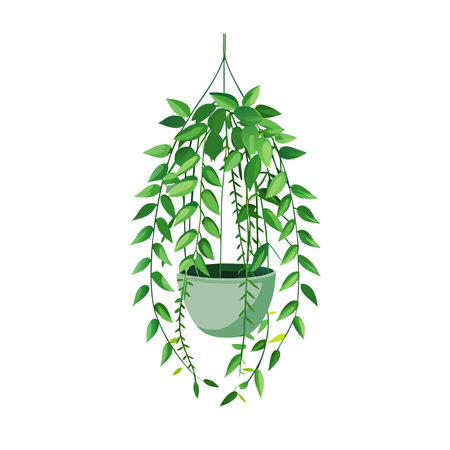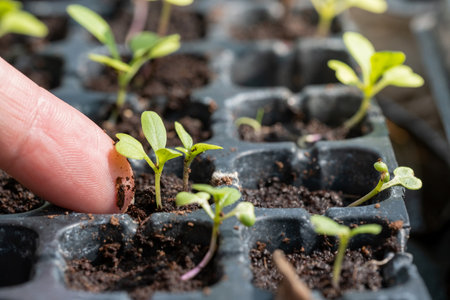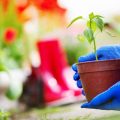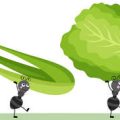1. Essential Gardening Basics
This section introduces foundational gardening terms every beginner should know. Whether youre starting a small backyard garden or planting in containers on your balcony, understanding these basic terms will help you grow with confidence.
Annuals vs. Perennials
Knowing the difference between annuals and perennials is key when choosing plants for your garden.
| Term | Definition | Example |
|---|---|---|
| Annuals | Plants that complete their life cycle in one growing season. They grow, flower, produce seeds, and die within a year. | Marigolds, Petunias, Zinnias |
| Perennials | Plants that live for more than two years. They usually bloom each year once established. | Lavender, Coneflowers, Hostas |
Hardiness Zones
The USDA Hardiness Zone Map helps gardeners determine which plants are most likely to thrive in their local climate. Zones are based on average minimum winter temperatures and range from Zone 1 (coldest) to Zone 13 (warmest).
How to Use Hardiness Zones:
- Check Your Zone: Visit the USDA website or check plant tags at your local nursery.
- Choose Plants Accordingly: Pick plants labeled for your zone or lower for best survival rates.
Compost
Compost is decomposed organic matter that enriches soil and helps retain moisture. Its a natural way to feed your garden without using synthetic fertilizers.
Common Compost Ingredients:
- Browns: Dry leaves, cardboard, paper (carbon-rich)
- Greens: Vegetable scraps, coffee grounds, grass clippings (nitrogen-rich)
- Avoid: Meat, dairy, oily foods—they attract pests and slow decomposition
Soil Types
The type of soil in your garden affects water retention and plant health. Here are three basic types:
| Soil Type | Description | Best For |
|---|---|---|
| Sandy Soil | Lighter texture, drains quickly but doesn’t hold nutrients well. | Drought-tolerant plants like lavender or rosemary. |
| Clay Soil | Heavy and dense; holds water but drains poorly. | Trees and shrubs that like consistent moisture. |
| Loamy Soil | A balanced mix of sand, silt, and clay; ideal for most gardens. | A wide variety of vegetables and flowers. |
Potted vs. In-Ground Gardening
If youre short on space or renting your home, container gardening might be a great option. Heres how it compares to traditional in-ground planting:
| Method | Pros | Cons |
|---|---|---|
| Potted/Container Gardening | Portable, good for patios/balconies, easy to control soil quality. | Larger plants may outgrow pots; needs more frequent watering. |
| In-Ground Gardening | Bigger root space, more sustainable long-term growth. | Takes more effort to prepare soil; less flexible if you move homes often. |
Understanding these essential gardening basics can make all the difference when youre just getting started. As we continue through this guide, youll learn even more key terms that will help you grow a thriving and rewarding garden space.
2. Soil and Fertilizer Fundamentals
If youre new to gardening, understanding your soil and how to feed your plants is key to success. This section breaks down common soil and fertilizer terms used in American home gardening so you can give your garden the healthy foundation it needs.
Soil Basics
Your soil is more than just dirt—its a living ecosystem that supports plant growth. Here are some terms youll see often:
| Term | What It Means |
|---|---|
| Topsoil | The uppermost layer of soil, rich in organic matter and nutrients, where most plant roots grow. |
| Loam | A balanced mix of sand, silt, and clay—ideal for most plants because it drains well but holds moisture. |
| Clay Soil | Dense soil that holds water well but can become compacted, making it harder for roots to grow. |
| Sandy Soil | Light, gritty soil that drains quickly but may not hold nutrients well. |
| Silty Soil | Smooth and slippery when wet; holds moisture better than sandy soil but may have drainage issues. |
Soil Amendments
Amendments improve soil structure, drainage, or nutrient content. Here are some common types:
| Amendment | Purpose |
|---|---|
| Compost | Decomposed organic matter added to enrich soil with nutrients and improve texture. |
| Peat Moss | Helps retain moisture and improve soil structure; commonly used in potting mixes. |
| Perlite | A lightweight material added to improve aeration and drainage in the soil. |
| Vermiculite | A mineral that holds water and nutrients; often used in seed-starting mixes. |
| Lime | Raises pH levels in acidic soils, making them more neutral for better plant growth. |
Understanding pH Levels
The pH scale measures how acidic or alkaline your soil is. Most vegetables prefer slightly acidic to neutral soil (around 6.0–7.0).
| pH Level | Description |
|---|---|
| Below 6.0 | Acidic – May require lime to raise the pH. |
| 6.0–7.0 | Neutral – Ideal range for most home garden plants. |
| Above 7.0 | Alkaline – May need sulfur or organic matter to lower the pH. |
Fertilizer Terms You Should Know
N-P-K Ratio
This stands for Nitrogen (N), Phosphorus (P), and Potassium (K)—the three main nutrients plants need. The numbers on a fertilizer bag (like 10-10-10) show the percentage of each nutrient.
Organic vs. Synthetic Fertilizers
Organic fertilizers, like compost or bone meal, come from natural sources and release nutrients slowly. Theyre great for building long-term soil health.
Synthetic fertilizers, also known as chemical fertilizers, offer quick-release nutrients but can deplete soil quality over time if overused.
Sidedressing & Topdressing
Sidedressing means applying fertilizer next to growing plants during the season.
Topdressing involves spreading compost or fertilizer over the surface of the soil around plants without digging it in.
Slow-Release vs. Quick-Release Fertilizers
Slow-release fertilizers provide nutrients over time, reducing the need for frequent feeding.
Quick-release fertilizers act fast but may need more frequent application and risk burning plants if overapplied.
The right combination of healthy soil and proper fertilization can make all the difference in your gardens success. Understanding these terms will help you make better choices for strong, productive plants.

3. Planting and Propagation Techniques
Getting started with gardening means learning how to grow plants from the very beginning. Whether youre sowing seeds, taking cuttings, or moving young plants into your garden, knowing the right terms can make the whole process a lot easier. Heres a breakdown of key planting and propagation terms every first-time gardener should know.
Starting Plants
Sowing
This simply means planting seeds in soil. You can sow seeds directly in your garden (direct sowing) or start them indoors in seed trays (indoor sowing).
Germination
The process of a seed sprouting and growing into a seedling. Germination needs moisture, warmth, and sometimes light.
Seedling
A young plant that has just emerged from the seed. Seedlings are usually delicate and need care before being moved outdoors.
Hardening Off
The process of slowly introducing indoor-grown seedlings to outdoor conditions. This helps prevent transplant shock.
Propagation Methods
Cuttings
A method where you take a piece of a plant (like a stem or leaf), place it in soil or water, and grow a new plant from it.
Division
This involves separating an existing plant into multiple parts, each with roots and shoots, then replanting them. Its common for perennials like hostas or daylilies.
Layering
A technique where you bend a low-growing branch to the ground and cover part of it with soil until roots form. Then you cut and transplant it as a new plant.
Transplanting Terms
Transplant
The act of moving a plant from one location to another — often from indoors to outdoors or from a pot to the ground.
Root Ball
The mass of roots at the base of a plant. When transplanting, try to keep the root ball intact to avoid damaging the plant.
Transplant Shock
A common problem when plants are moved; symptoms include wilting or slow growth. It can be minimized by watering well and avoiding damage to roots.
Plant Spacing & Depth
Certain plants need space to grow properly and must be planted at the right depth. Here’s a quick reference guide:
| Term | Description |
|---|---|
| Spacing | The distance between each plant. Proper spacing allows airflow and reduces disease risk. |
| Depth | The level at which seeds or transplants are placed in the soil. Too deep or too shallow can affect growth. |
| Crowding | This happens when plants are too close together, leading to competition for nutrients and sunlight. |
If youre unsure about spacing or depth for specific plants, check the seed packet or plant tag—it often includes this info!
4. Watering and Irrigation Know-How
Understanding how and when to water your garden is one of the most important parts of being a successful gardener. Whether you’re working with a small backyard bed or several raised planters, knowing the right watering techniques can make all the difference. Here are some common terms every beginner gardener should know when it comes to watering and irrigation.
Deep Watering
Deep watering means soaking the soil thoroughly so that water reaches down to the root zone, rather than just wetting the surface. This encourages plants to grow deeper roots, which makes them stronger and more drought-resistant. Its better to water deeply and less frequently than to water lightly every day.
Tip:
Stick your finger into the soil about 2 inches deep. If it feels dry, its time to water.
Drip Irrigation
Drip irrigation is a system that delivers water directly to the base of plants through tubes or hoses with tiny holes. It’s an efficient way to water because it reduces evaporation and runoff. This method is especially popular in hot climates like California or Arizona, where conserving water is key.
Benefits of Drip Irrigation:
| Benefit | Description |
|---|---|
| Water Efficiency | Delivers water exactly where needed |
| Less Evaporation | Keeps water from evaporating in hot sun |
| Healthier Plants | Prevents leaves from getting too wet, reducing disease |
Drought-Tolerant Plants
Drought-tolerant plants are species that can survive with minimal watering once established. They are perfect for low-water gardens or areas with watering restrictions. These plants often have features like thick leaves or deep roots that help them store water.
Examples of Drought-Tolerant Plants:
| Plant Name | Common Use |
|---|---|
| Lavender | Fragrant herb for flower beds and borders |
| Sedum | Succulent ground cover for sunny spots |
| Yarrow | Tough perennial great for pollinators |
Soaker Hose vs. Sprinkler
A soaker hose slowly releases water along its length, similar to drip irrigation but simpler to set up. A sprinkler system, on the other hand, sprays water over a wide area — good for lawns but not as efficient for garden beds due to potential water waste.
| Irrigation Type | Best For |
|---|---|
| Soaker Hose | Vegetable beds, flower gardens, shrubs |
| Sprinkler System | Lawn areas or large open spaces |
The Importance of Timing
The best time to water your garden is early in the morning when temperatures are cooler and wind is calm. This helps reduce evaporation and gives plants time to absorb moisture before the heat of the day.
5. Pest, Disease, and Weed Control
New to gardening? One of the biggest challenges youll face is keeping your plants healthy and free from pests, diseases, and weeds. This section breaks down common terms every beginner gardener in the U.S. should know to protect their garden naturally and effectively.
Pest Control Terms
Understanding how to manage unwanted insects or animals in your garden starts with knowing these key terms:
| Term | Definition |
|---|---|
| Aphids | Small, soft-bodied insects that suck sap from plants, often found on roses and vegetables. |
| Beneficial Insects | Insects like ladybugs or lacewings that help control harmful pests naturally. |
| Neem Oil | A natural pesticide derived from the neem tree used to deter a wide range of garden pests. |
| Diatomaceous Earth | A fine powder made from fossilized algae that helps control soft-bodied insects like slugs and ants. |
| Integrated Pest Management (IPM) | A method that combines biological, cultural, physical, and chemical tools to manage pests in an environmentally responsible way. |
Plant Disease Terms
Diseases can spread quickly in your garden if youre not careful. Here are terms to help you recognize and prevent them:
| Term | Definition |
|---|---|
| Blight | A fast-spreading disease that causes browning or blackening of leaves, common in tomatoes and potatoes. |
| Fungal Infection | Diseases caused by fungi such as powdery mildew or root rot; often thrive in moist conditions. |
| Bacterial Wilt | A plant disease that clogs water flow inside stems, causing wilting even when soil is moist. |
| Cultural Controls | Gardening practices like crop rotation or proper spacing that help prevent disease outbreaks. |
| Fungicide | A chemical or natural treatment used to prevent or treat fungal infections on plants. |
Weed Identification & Control Terms
Weeds compete with your plants for nutrients and space. Knowing these terms will help you keep them under control:
| Term | Definition | |||||||||||||||||||
|---|---|---|---|---|---|---|---|---|---|---|---|---|---|---|---|---|---|---|---|---|
| Annual Weed | A weed that completes its life cycle in one growing season (e.g., crabgrass). | |||||||||||||||||||
| Perennial Weed | A weed that returns year after year unless completely removed (e.g., dandelion). | |||||||||||||||||||
| Mulch | 6. Garden Types and Styles
| Plant | Use in Landscape |
|---|---|
| Lettuce | Colorful border plant |
| Strawberries | Ground cover with edible fruit |
| Rosemary | Shrub-like herb for edging paths |
| Dwarf Fruit Trees | Ornamental focal points with harvestable fruit |
Other Common Garden Styles Worth Exploring:
| Garden Style | Description |
|---|---|
| Cottage Garden | A charming mix of flowers, herbs, and vegetables with an informal layout. |
| Zen Garden | A minimalist Japanese-style garden focused on rocks, gravel, and meditative spaces. |
| Tropical Garden | Lush greenery and bold foliage with warm-weather plants like palms and ferns. |
| Xeriscape Garden | A water-wise landscape using drought-tolerant plants such as succulents. |
No matter what type of garden you choose, understanding these styles can inspire you to create a beautiful and functional outdoor space tailored to your needs.


